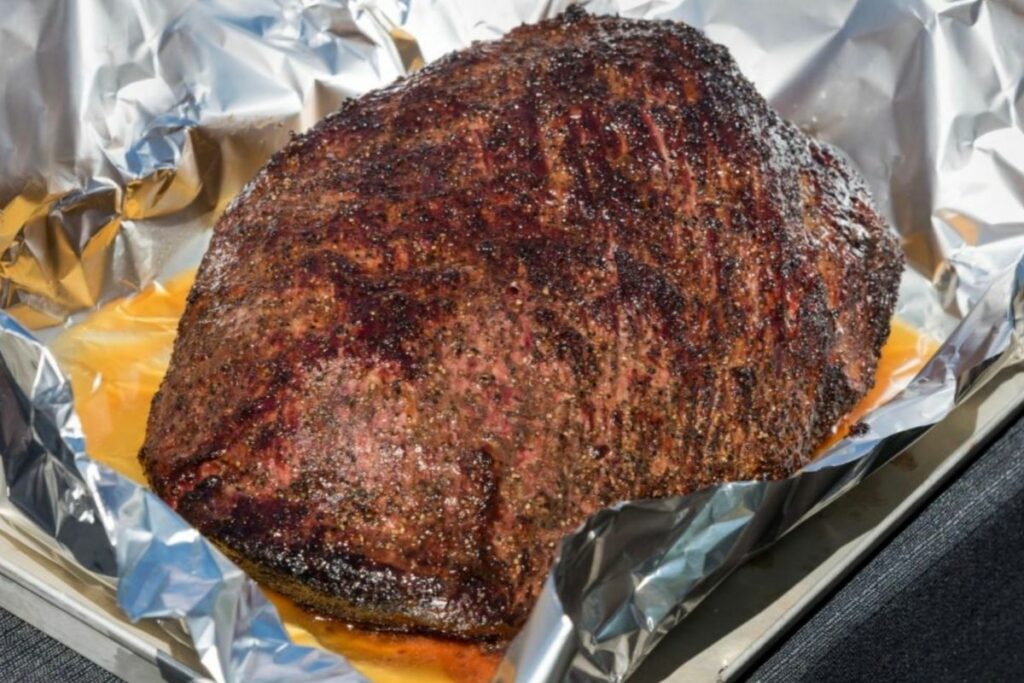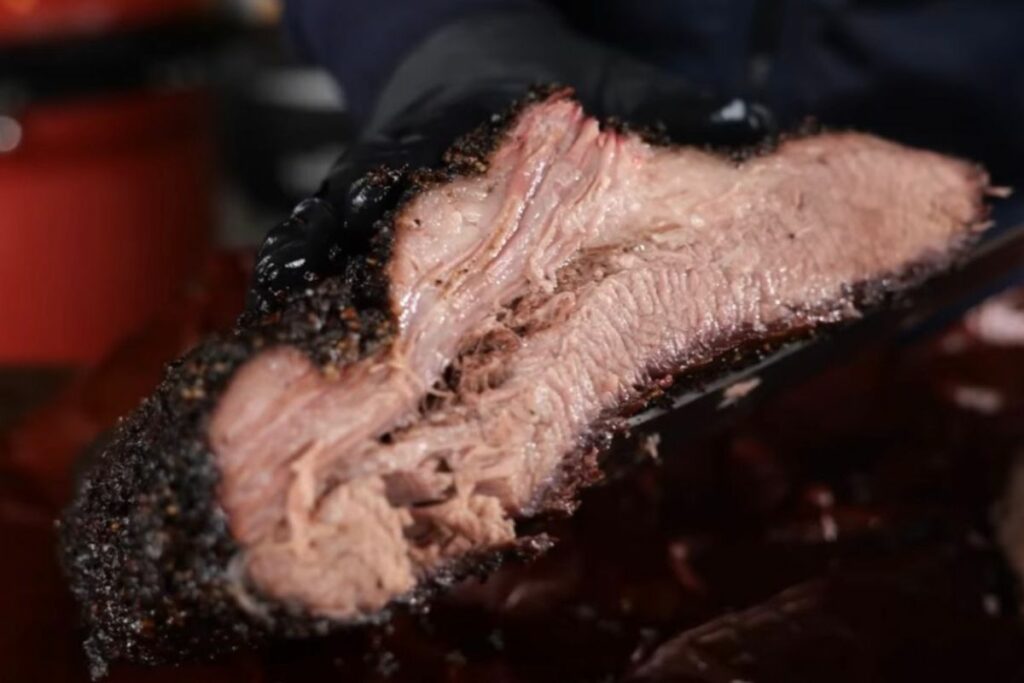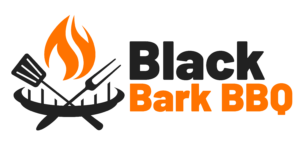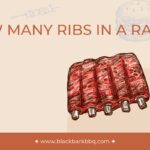If you’re an enthusiastic griller on the BBQ, chances are, you’ve heard of the debate over whether to wrap brisket or not.
Some grillers and pitmasters praise this method and say it improves the quality of results whereas others swear you can get the same quality by leaving the brisket bare for the duration of the cooking time.

If you do end up deciding to cook your brisket wrapped, you need to know how to do it right.
We have written this article to guide you through the process, which is also known as the Texas Crutch, teaching you how to wrap brisket, which materials to use, along other tips to help you perfect your technique.
Why Should You Wrap Brisket?
Wrapping brisket is a personal choice and pitmasters have debated why it’s worth doing for years. It comes down to two factors: time and texture.
Wrapping brisket helps to speed up the cooking process as it powers it through the period called ‘the stall’. This means if you are aiming to cook the meat quickly, you might consider taking this extra step.
Wrapped brisket also has a softer bark than the ‘naked’ variety. This becomes a concern if you use aluminum foil in particular, as the meat is being steamed and cooking inside the wrapper.
This is why proponents of hard bark usually let the brisket cook without the wrapping process.
The Texas Crutch
In the BBQ world, the term, ‘Texas crutch’ is used often but its origins remain vague. A lot of people think the technique might have been invented in Texas, yet it is just as likely that it got its name simply because of the big BBQ culture in the state.
The term, ‘crutch’ is the portion of the name which is easier to understand. Wrapping the meat allows it to reach an ideal temperature a lot quicker, whilst also stopping the brisket from losing moisture whilst cooking.
This means the chef has an extra leg to stand on and it’s why the term, ‘crutch’ is involved.
It’s also important to point out that brisket is not the only cut of meat that can benefit from the Texas crutch and BBQ experts might use it with smoked ribs and pulled pork to speed up the cooking process.
The Stall
As we mentioned earlier in the article, those who use the Texas crutch wrapping method do so to beat the stall. This is the part of the cooking process where the temperature of the meat pauses for several hours.
It commonly happens at around the 150-degree mark, yet can also happen at various points throughout the cooking process and sometimes can happen more than once.
The stall comes about as a result of evaporative cooling and as the brisket cooks, it starts to lose moisture. This moisture evaporates on the surface and this can slightly cool down the meat.
At a particular point, the heat from the smoker is not sufficient enough to fight off the cooling effect. The temperature then hits a stall which some chefs like to tackle using the Texas crutch.
Eventually, excess moisture in the meat will start to evaporate without wrapping and the temperature will start to rise again.
However, this takes time and if you don’t have a lot of it, wrapping can speed up the process significantly.
When Should You Wrap Brisket?
The best time to wrap brisket is when it reaches the 150-160 degree threshold. When it reaches this point, the meat should enter ‘the stall’.
That means the cooking process will begin to slow down and to help speed things up again, it’s a good idea to start wrapping.
We would advise you to wrap your brisket at the beginning of the stall, meaning as soon as you see the temperatures falling, take the brisket straight off the heat and begin wrapping.
Keep an eye on those numbers and this should happen at around 150 degrees.
You might find the meat starts to stall earlier than this, however, and in this case, you should start to wrap as soon as possible.
This is especially important if you begin to notice the brisket has been held at a temperature below 140 degrees. This is because if the brisket stays between 40-140 degrees for longer than 4 hours, this could become a breeding ground for bacteria.
As a general rule, you need to wrap the brisket when it starts to stall or when it hits 150 degrees, yet even if you don’t believe the meat has begun stalling yet, you will inevitably save time by wrapping it in advance.
Wrapping Brisket In Foil
Wrapping brisket in foil is considered to be the original, most common, and easiest method of the Texas crutch. When you use this method, however, you might have to use it with meat that has a softer bark.
However, the foil will block the smoke and this means instead of a traditional smoky flavor, you will have a rich, strong, beef flavor.
Wrapping brisket in foil which is malleable means you can wrap the meat tightly, even if you have never wrapped brisket before.
Foil is also easy to find in supermarkets and most people have it lying around their kitchen so you don’t need to go far to get your hands on some.
To wrap your brisket in foil, you need to use two pieces of heavy-duty aluminum foil which are about as long as your arm. You will need to stack these on top of each other and pop them to the side.
Set the brisket which has been partially cooked on the foil and then wrap it as tight as possible before returning to the smoker when it has reached the temperature you desire.
The foil should form a tight seal around the meat and will speed up that cooking progress. Keep an eye on the meat as it finishes cooking and if having a crispy bark is important to you, remove the foil during the last hour of cooking.

Wrapping Brisket In Foil And Towel
This is the method that is best used only when the meat has finished cooking. It is known as ‘holding’ the barbecue until you are ready to dish up and serve.
It is also known as the ‘faux Cambro’ technique and since you will need to let the brisket rest for around 30 minutes after cooking anyway, it gives you even more leeway in terms of time.
It means you can smoke the brisket at your own pace and if it’s ready within a few hours before your guests are meant to arrive, it won’t ruin the meat.
Holding the meat can result in a succulent BBQ because of the redistribution of moisture. When the meat is fully cooked, it still holds up to over 50% of water and when it is heated, its proteins become disrupted.
The resting period however lets the remaining moisture bind around these proteins and this means the meat stays juicy after being sliced.
To use the faux Cambro method, you need to fill up a large cooler with 3 gallons of hot water and close the lid before waiting 30 minutes and pouring the water out.
You need to do this when the brisket’s internal temperature is reaching around the 195-degree mark. This way, the cooler will still be warm when you put the meat in.
When the brisket has reached the perfect temperature and the probe can slide in and out without resistance, pull the meat out of the smoker and wrap it in aluminum foil.
Make sure this is a double layer and use a few clean towels to wrap the brisket before setting it in the prepared cooler until you are ready for it to be served.
The faux Cambro method usually works for around 2-3 hours but you might be able to get away with holding it up to 4 hours. If you think you might be waiting longer than this, however, it might be best to let the brisket cool before reheating it when your guests arrive.
Wrapping Brisket In Butcher Paper
Another popular way of wrapping brisket is using butcher paper. This is a lot of pitmaster’s favorite way of wrapping brisket, and Texas-born BBQ chef, Aaron Franklin is known for using pink butcher paper, which is also known as ‘peach paper’. The product is FDA compliant and can be used with food.
Similar to parchment paper, pink butcher paper allows the brisket to ‘breathe’ whilst being smoked and can trap just the right amount of moisture inside. This type of paper has been treated so it does not fall apart when it is wet. This process is called ‘sizing’ and means the meat will not disintegrate whilst being smoked.
Avoid buying pink-or peach-colored freezer paper however instead of pink butcher paper. Whilst they are similar, they have different properties and are not used for wrapping brisket in the same way.
To start with, you need to layout two sheets of pink butcher paper and these should be around 4 times as long as the brisket’s width. Just like the aluminum foil technique, you can use the length of your arm as a rough guide.
Keeping it lengthways, you need to place the brisket down with the flat side facing up and leave it to rest around 12 inches from the bottom edge of the paper. If you are using a brisket spritz, this is the time you need to add it.
Fold the bottom edge over the meat and pull it close as you can to create a tight package. You then need to repeat this process with the sides of the wrapper and take care to fold the paper underneath the brisket as you attend to each side separately.
The folds need to be lined up as close as possible with the brisket’s natural contours and when each side is tucked in, smooth the paper out and hold the wrapper as you roll the brisket over.
Fold the different sides of the wrapper before folding over the top end of the paper. This should create a double layer.
Now you need to roll the brisket once more and leave the flat side facing up with the double layer of wrapping left underneath. The meat is ready to be placed back on the smoke for the rest of the cooking time.
Wrapping Brisket In Parchment Paper
If you want to wrap the brisket but you’re cautious of using aluminum foil, parchment paper is also commonly used in the grilling community.
Parchment paper is a cellulose-based product that has been coated with silicone and this is what makes it non-stick. Of all the different wrapping options used to wrap brisket, this is probably the thinnest and the most delicate.
Parchment paper is breathable compared to foil, yet can still withstand those extreme temperatures. It does not sacrifice moisture as the juices from the meat will gather inside the paper and it will also speed up the cooking process.
However, although it does not allow moisture to escape it also allows for evaporation, meaning it makes for decent bark.
The only downside of using parchment paper however is that it can tear pretty easily. It might also ignite if the temperature of the smoker you are using increases too much.
Most brands of parchment paper however are resistant to heat and can withstand temperatures up to 400 degrees Fahrenheit and so it is usually fine to use to wrap your brisket when smoking.
Avoid Wrapping Brisket In Freezer Paper
Freezer paper is moisture resistant and thicker than other materials. It is also coated in wax on one side and though you can use freezer paper instead of butcher or parchment paper when you store meat, you should not use it to smoke the meat.
Freezer paper is treated with a poly coating and this prevents ice crystals from forming over the food.
As a result, the paper is not resistant to heat and if this coating comes into contact with extreme temperatures, it will melt all over your brisket which can ruin the meat entirely as well as present a fire hazard.

Bare Brisket Smoking
As we have mentioned, a lot of pitmasters prefer not to wrap their brisket at all and this is what is known as bare brisket. To do this, you need to make sure you are cooking it at a low temperature and a slow and steady pace.
Not wrapping your brisket allows for direct heated enveloping of the meat. However, it might allow moisture to escape meaning your meat might be juicier if you decide to wrap.
Adding Liquid When Wrapping Brisket
It is also common to add liquid when wrapping brisket. Options can range from cider, beer, or apple juice to beef stock, vinegar, or broth.
You can also add melted butter and water or Worcestershire sauce and water, or even wine and water. Adding liquid ensures the meat becomes tender, smoky, and juicy, adding flavor to the brisket and cooling the meat to prolong the cooking process.
The liquid also helps to trigger a chemical reaction that forms the smoke ring when smoking brisket, and a high fructose spritz makes the brisket sticky, which helps to caramelize the bark.
Adding too much liquid can wash away spices and flavor from the rub but a thicker spritz adds a whole additional layer of flavor.
Be careful not to add too much water to the meat either as this will only run off the surface of the meat.
You need to ensure you are not adding too much liquid to the meat either and to regulate the amount of liquid, we recommend using a spritz bottle to get a thin coating of moisture over the meat.
You can also put a small amount of liquid on the wrapper before adding it directly to the brisket.
Ensure you don’t put more than 3 or 4 ounces of liquid on the wrapper however and this technique only works when you use aluminum foil as this is the material that traps the most moisture inside.
Wrapping Brisket Before Or After Stalling
Though it has been debated for years, there is no clear answer to this question, and since some pitmasters don’t wrap the brisket at all, this question is never fully answered.
Whether you wrap your brisket or not, achieves different results every time and different results occur whether you wrap it before or after the stall too, so it is hard to say which option is best.
If you do wrap the brisket too early, however, this will deprive it of that smoky flavor that provides a good BBQ.
For this reason, it is best to wait for at least three hours before you begin wrapping because this is when the meat has absorbed enough smoke to make a noticeable difference in how the meat tastes.
As mentioned earlier in the article, we recommend wrapping the brisket when it reaches around 150-160 degrees.
This way you do not need to guess when the stall might begin and getting it in the wrapper is the important part anyway. Once you have completed this step, the meat will power through the stall more quickly.
If you prefer your bark on the brisket to be thick and mahogany-colored, you need to hold out on the wrapping process until the brisket achieves an internal temperature of 170 degrees.
In most cases, this happens after the stall and means you could be waiting a long time.
Wrapping The Point vs. The Flat
If you decide to smoke the whole packer brisket, you need to know whether it is a good idea to separate the flat from the point before you wrap it. It might come as a surprise, but it does not matter if you do or not.
If you don’t, the flat end might finish cooking before the point but they need to both be left in the wrapper until they have reached 195 degrees.
If you do decide to smoke the point and the flat separately, there is no answer to whether you should pull the meat for wrapping. This can be done according to personal preference but we recommend you stick to wrapping at the 150-160 degree mark.
If you are not wrapping the point and flat separately, it also means you will need less material than you would for a whole packer brisket. Ensure you use double layers which are 4 times longer than the brisket width and this should cover it.
You might also need to remove the point from the wrapper if you want to make burnt ends. To do this, wait until the flat end of the brisket reaches 195 degrees and separate the flat from the point, before cutting the point meat into cubes.
You then should return the cubes to the smoker for another hour whilst the flat rests. If the flat is not tender enough pop it back onto the cooking grate.
When the point meat is as crispy as you want it to be, remove the cubes and take them off the heat. You can then serve with some smoky BBQ sauce. Once the flat is done cooking, rest it for 30 minutes in its wrapper before you begin slicing.
Final Thoughts
We hope by reading this article you have gained a better understanding of what the Texas crutch is and why it is such a popular way of smoking brisket.
Although a lot of pitmasters might prefer the ‘naked’ method, wrapping the brisket can preserve moisture, speeds up the cooking process, and can ultimately help you serve up the tastiest and most tender, juicy cuts of meat.
If you do end up wrapping your brisket, we recommend trying butcher or parchment paper instead of opting straight for the foil.
This way, you won’t be sacrificing that traditional smoky flavor whilst still being able to speed up the cooking process.
With a bit of trial and error, wrapping your brisket can be the best way to cook your meat on the smoker and we highly recommend doing so to enhance flavor and speed up the process to feed your hungry guests as soon as possible!
- Is Blue Steak Safe To Eat? - May 7, 2022
- How To Tell If Your Bratwurst Sausage Is Cooked - May 7, 2022
- The Internal Temperature For Tri Tip When Done - May 7, 2022








